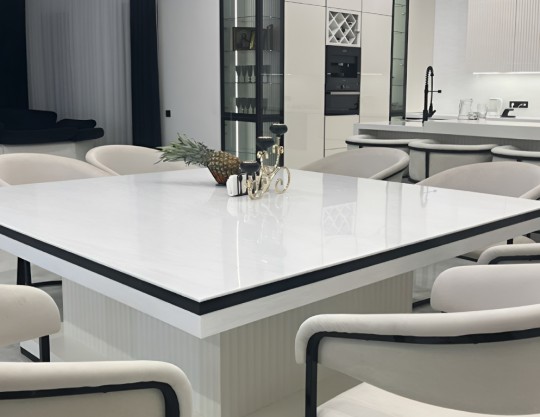How to arrange a space for relaxation?
References
In the daily rush, it is easy to forget that relaxation also requires space. And it doesn't have to be a large space! Sometimes a small but well-arranged corner is enough to create a place where your mind can unwind. What should you keep in mind when arranging such a place?

Choose the right location
The ideal place to relax does not have to be a separate room. It often arises where it is simply ‘comfortable to sit’. It could be a corner of the living room that has been empty until now, a space by a large window or an alcove in the bedroom. It is important that this place naturally promotes calm, is away from areas where household members gather, and is free from visual and acoustic chaos.

Choose the right lighting
Light is the simplest and most effective way to create a mood. If you can, take advantage of natural light so that you can enjoy your morning coffee in the rays of the rising sun or admire a spectacular sunset after a hard day. Place an armchair near the window to create a cosy reading corner. In the relaxation area, it is worth choosing softer artificial lighting, e.g. a floor lamp with a warm colour, a wall lamp, a delicate LED strip or a lamp by the table. An interesting solution can also be an illuminated decorative panel on the wall, made of beautiful onyx (which partially transmits light, emphasising the unique pattern of the slab) or quartz surface Avant Quartz with similar properties. Layered light provides much greater comfort than a single strong source.

Comfort above all else!
Relaxation begins when the furniture does not force you into any position and allows you to sit however you like. That is why it is worth choosing a large, comfortable armchair with a footrest, a soft pouffe, a chaise longue or a hanging chair.

The right materials are the key to success
Fabrics with a soft, pleasant texture, such as velour, bouclé, wool and linen, work best in relaxation areas. They create a cosy atmosphere and avoid the effect of ‘overloading’. Calm colours, subtle patterns, pleasant wood grain or elements made of stone with nature-inspired decorations look good in the background.
Details that create the atmosphere
In the relaxation area, the surroundings are very important. Surround it with beautiful, living plants, candles, choose a soft rug, blanket, decorative tea table or aroma diffuser to create a unique scent.

The relaxation area does not need to be a separate room. A small ‘micro-zone’ works well in the living room: a comfortable armchair placed slightly off to the side, next to a table and a lamp providing pleasant, focused light. In the bedroom, a chaise longue by the window or a soft built-in seat, ideal for morning coffee or evening reading, can serve a similar function. Even a small balcony or loggia can be turned into a cosy corner; all you need is a weather-resistant deckchair, a few plants and an outdoor rug to warm up the space. In the bathroom, relaxation is created with light and details: candles, a soft towel and subtle lighting can turn an ordinary bath into a home spa. If there is a recess in the flat, it is worth using it, as it is the perfect place for a mini library, a quiet corner for listening to music or a moment of rest during the day.

A relaxation zone does not require a lot of space or complicated solutions; the key is a conscious approach to comfort and details. Even a small part of your flat can become a place where you can take a breather, put down your phone and slow down. The most important thing when creating such a space is to be guided by your own needs. If you take care of the lighting, proportions and materials, you will gain a corner that you really want to return to.
Check also: How to arrange a dining room?



